Specialty Services in San Diego, CA

Why race across town to dentists you don’t know?
We provide comprehensive, specialized dental care in one familiar place.
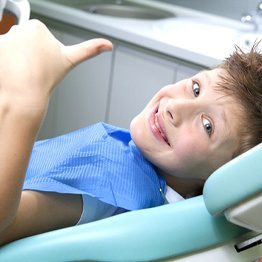
After suffering with braces for five long years, Dr. Greg Friedman became passionate about finding an easier, shorter, and more comfortable way to straighten children’s teeth. In certain cases, we use retainers when teeth are growing in to expand the mouth, making room for all of the teeth to fit instead of extracting teeth at a later age. By developing the dental arch with retainers, we can reduce the time braces have to be worn by up to two years, in many cases!
Early orthodontic intervention for our children could be key to a healthy ideal bite for them later in life. If you have questions about your child’s orthodontic issues, call today for your complimentary consultation.
For teens and adults alike, Invisalign is becoming a very popular and conservative alternative to traditional braces. With Invisalign clear braces, patients can straighten their teeth inconspicuously and in a short timeframe. There are no conventional wires and brackets, but instead patients will go through a series of clear, removable aligners. This gives patients the freedom to brush and floss easily, eat whatever they like, and carry on with their daily lives uninterrupted.
Invisalign clear braces fit over the teeth to gradually align them into proper formation. They can be removed for special events but should be worn for 20-22 hours a day in order to keep treatment on track. Invisalign clear braces can help with teeth that are overcrowded, too widely spaced, crossbites, overbites, and underbites.
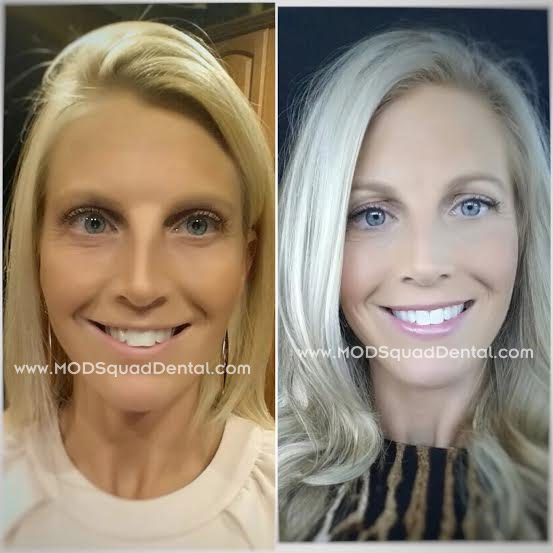
Understanding the Cost of Invisalign
When you choose to have your teeth straightened with Invisalign, you are making a smart investment in your smile. The many benefits and amazing results of this treatment are well worth the time, effort, and money you put into it. An important part of your Invisalign consultation is discussing the cost, and as soon as Dr. Friedman examines your teeth, he can put together a treatment plan with a tentative schedule and pricing. At that point, we’ll be happy to talk about your options!
Factors That Affect the Cost of Invisalign
Every Invisalign case will cost a different amount because no smiles are exactly alike. While one patient may need the clear aligners for 18 months, another may wear Invisalign for 9 months. It depends on how severely misaligned your teeth are, how long you’ll need to have the aligners, and how closely you follow Dr. Friedman’s instructions. That’s why we can’t give an estimate for treatment until we’ve had the chance to look at the current condition of your smile.
Invisalign vs. Smile Direct Club™: Which Costs More?
You may have seen commercials or ads for cheaper alternatives to Invisalign; however, what they don’t tell you is that going with them could be more trouble than it’s worth. With Smile Direct Club, you are in charge of taking your impressions. As any dental professional will tell you, impressions can be inaccurate if you’re not careful, leading to improperly fitting aligners. Also, other than the initial treatment plan, no qualified professional is supervising your treatment. This means that if something goes wrong—you lose an aligner, for instance—no one is available to make adjustments. In the end, you could have a smile that isn’t perfectly straight and need additional treatment to correct the problem.
Does Dental Insurance Cover Invisalign?
Sometimes dental insurance coverage includes orthodontic treatment, but not many policies apply to Invisalign treatment. The best way to know what your plan does and doesn’t cover is to talk to your dental insurance provider directly. They can answer questions about the benefits you’re entitled to.
Options for Making Invisalign
At Mod Squad Dental, we offer a better alternative to traditional dental insurance. Our Savings Club membership includes not just preventive care but also a 15 percent discount on all other services, including Invisalign. As a result, you can spend less and still enjoy a perfectly straight, beautiful, and healthy smile! In addition, we also work with CareCredit, a trusted third-party financier, to make payments for Invisalign simple. You may even qualify for a low or no-interest rate!
Invisalign FAQs
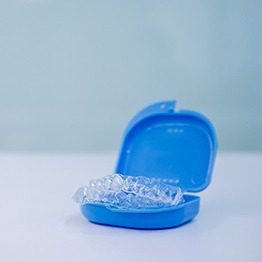
After reading this page, do you still have questions about what you can expect from Invisalign in Scripps Ranch? Below, we’ve compiled some of the most frequently asked questions from our patients and answered them for your convenience. If you don’t see your questions listed below, don’t hesitate to contact our office!
How often do I need to wear my aligners?
In order to stay on track with your treatment timeline that Dr. Friedman will outline for you during your initial consultation, you’ll need to wear your trays for 20-22 hours every day. This means that you only have time to take them out when you’re eating, drinking anything besides water, and brushing or flossing your teeth.
How many times will I need to visit the dentist during treatment?
As you’re moving through your treatment, you’ll need to visit our office once every six to eight weeks for a quick progress check and to pick up the next series of trays. This way, we can make sure that you’re staying on track with your treatment timeline and don’t encounter any complications along the way.
How old do you need to be to undergo Invisalign treatment?
Orthodontic treatment like Invisalign isn’t recommended for young patients who don’t have all of their permanent adult teeth yet. However, for teens and adults, Invisalign is a great way to correct bite misalignment, crowding, and a variety of other orthodontic problems.
What can I eat and drink during treatment?
One great benefit about Invisalign aligners is that you don’t have to alter your diet or watch what you eat out of fear of breaking your appliance, like you do with metal braces. All you need to do before you eat anything is take your trays out of your mouth and place them in their hard, protective case so you don’t accidentally throw them away while cleaning up. Once you’re done, simply rinse your trays, brush and floss your teeth, and place your aligners back in your mouth so they can keep working on straightening your smile.
How do I clean my Invisalign trays?
Cleaning your Invisalign trays is a crucial part of the treatment. It’s absolutely necessary to make sure that you don’t develop oral health issues, such as cavities and gum disease, while you’re working towards a straightened grin. All you need to do is brush your trays with a soft-bristled toothbrush and clear antibacterial soap at least once a day. You can also sanitize them by placing them in an equal-parts mixture of white distilled vinegar and lukewarm tap water for 15-30 minutes. Before placing them back in your mouth, be sure to gently brush and rinse them.

There are many physicians that place dental implants. There are only a handful of physicians utilizing the PRF process when placing them. Dr. Friedman knows the many benefits of PRF & incorporates the process when diagnosing the procedure. Know your options if you are interested in dental implants or in need of replacing missing teeth.
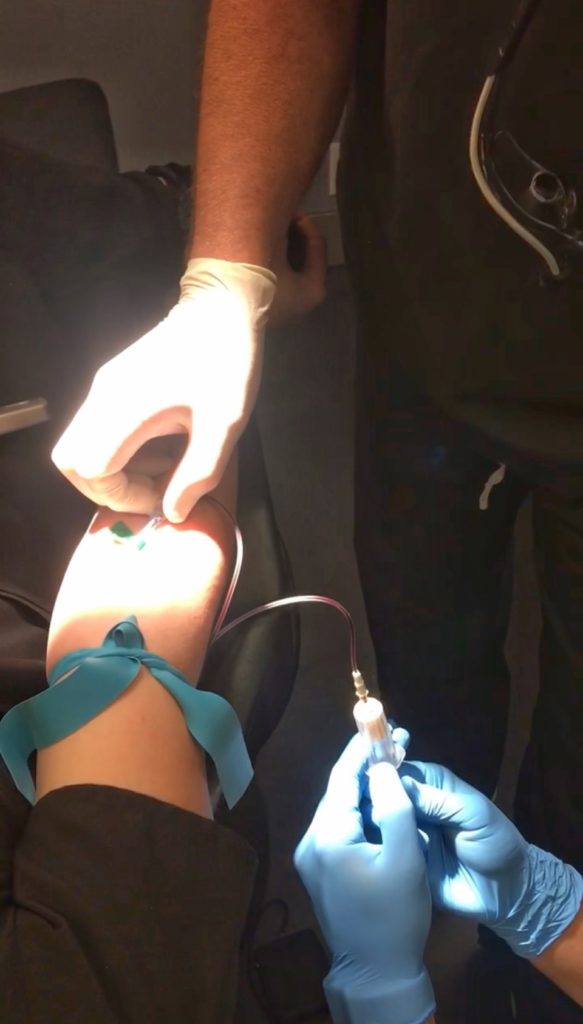
Platelet-rich fibrin (PRF) & its predecessor, platelet-rich plasma (PRP), are categorized as autologous blood concentrates, which are blood products made using the patient’s own blood. The physician draws a blood sample from the patient then concentrates it using a centrifuge machine to separate the different blood components into individual, concentrated layers that the physician can use during the extraction or implant placement process. Although several variations of this technology exist today that prioritize different blood components, the overarching concept in dentistry is the same — they use the patient’s own blood to enhance healing after oral surgery.

In addition to speeding healing, there is a laundry list of benefits for patients & dentists: It decreases bleeding & reduces inflammation. PRF is “rich” in leukocytes, so there’s a decreased risk of postoperative infection. And because it’s made from the patient’s own blood, risk of allergic or immunologic rejection is eliminated.
If you are interested in knowing more about PRF or dental implants, call Jess today to schedule your complimentary implant consultation.
In the past, if you had a tooth with a diseased nerve, you’d probably lose that tooth. Now, with “root canal therapy,” your tooth can be saved. When a tooth is cracked or has a deep cavity, bacteria can enter the pulp tissue and germs can cause an infection inside the tooth. If left untreated, an abscess may form. If the infected tissue is not removed, pain and swelling can result. This can injure your jawbones and be harmful to your overall health.
Root canal therapy involves one to three visits. During treatment, your general dentist or endodontist removes the affected tissue. Next, the interior of the tooth will be cleaned and sealed. Finally, the tooth is filled with a dental composite. If your tooth has extensive decay, your dentist may suggest placing a crown to strengthen and protect the tooth from breaking. As long as you continue to care for your teeth and gums with regular brushing, flossing, and checkups, your restored tooth can last a lifetime.
What is a root canal procedure?
Tooth decay can progress down into the pulp. When this happens, the pulp can become infected. Infection of the pulp can be very painful and can also deteriorate into an abscessed tooth when infection and swelling develops in the tissues around or beneath the tooth. When the pulp becomes infected or the tooth becomes abscessed, it is necessary to perform a root canal.
Why do I feel pain?
When the pulp becomes infected due to a deep cavity or fracture, bacteria can seep in. When there has been an injury due to trauma, the pulp can die. Damaged or dead pulp causes increased blood flow, pressure, and cellular activity. Pain in the tooth is commonly felt when biting down or chewing, and eating or drinking hot and/or cold foods and beverages.
Why do I need root canal therapy?
The tooth will not heal by itself. Without treatment, the infection will spread. The bone around the tooth will begin to degenerate, and the tooth may fall out. Pain usually worsens until one is forced to seek emergency dental attention. The only alternative is extraction of the tooth, which can cause the surrounding teeth to shift, resulting in a bad bite. Though an extraction is cheaper, the space left behind will require an implant or a bridge, which can be more expensive than root canal therapy. If you have the choice, it’s always best to keep your original teeth.
What are the risks and complications with root canal therapy?
More than 95 percent of root canal therapies are successful. However, sometimes a case needs to be redone due to diseased canal offshoots that went undetected, or the fracturing of the canal filling. More commonly, a root canal therapy will fail altogether, marked by the return of pain.
What happens after root canal therapy?
Once root canal therapy is completed, the endodontist will refer the patient back to our office for the permanent restoration on the tooth. A temporary filling was placed immediately following the root canal therapy and will need to be replaced with a permanent filling or crown and build up. A crown will be necessary on all posterior teeth to properly protect the root canal- treated tooth from fracturing. Front teeth can typically be restored with a filling, however a crown may be necessary in some cases. Your dentist will determine the best choice for your individual needs.
How long will the restored tooth last?
Your restored tooth could last a lifetime, if you continue to care for your teeth and gums. However, regular checkups are necessary. As long as the root(s) of a treated tooth are nourished by the tissues around it, your tooth will remain healthy.
How does root canal therapy save my tooth?

- An opening is made through the crown of the tooth into the pulp chamber.
- The pulp is removed, and the root canals are cleaned, enlarged and shaped.
- Medications may be put in the pulp chamber and root canal(s) to help get rid of germs and prevent infection.
- A temporary filling will be placed in the crown opening to protect the tooth between dental visits. Your dentist may leave the tooth open for a few days to drain. You might also be given medicine to help control infection that may have spread beyond the tooth.
- The temporary filling is removed and the pulp chamber and root canal(s) are cleaned and filled.
- In the final step, a gold or porcelain crown is usually placed over the tooth.
An infected tooth is a serious condition and must be treated promptly to avoid tooth loss and the spreading of infection to other teeth. If you are concerned about an infected or abscessed tooth, we urge you to contact us promptly.
Dr. Friedman and his team have received extensive training in sedation dentistry. Only 1% of the dentists in the country are actually qualified in this type of conscious sedation dentistry, and patients come from all over Southern California to our Scripps Ranch dental office to be treated using this comfortable, safe, and effective system.
What is Sedation Dentistry and why is it Used in Dentistry?
The medication used for sedation “sleep” dentistry is called Triazolam. It is a small blue pill that is crushed and mixed with a flavored mint for taste. Dr. Friedman places the crushed granules under your tongue for simple absorption. The patient then relaxes in one of our dental suites. The medication takes about 40-50 minutes to help the patient feel fully calm and relaxed. This tablet has been prescribed over 10 million times per year by physicians for patient use at home. The drug has almost no side effects and isn’t likely to have any interaction with other medications you may currently be taking. Sedation dentistry allows you to comfortably undergo everything from a simple cleaning to extensive treatment fear-free. For those with severe dental anxiety, dental sedation can be the answer to receiving the dental care you need and have neglected in the past.
Benefits of sedation dentistry include:
- The medicine has an amnesia-like quality, which, for most patients, tends to prevent them from remembering much at all about the appointment.
- It enhances the effectiveness of anesthetic.
- It decreases gagging.
- It decreases joint and muscle soreness.
- It allows multiple treatments to be provided over less visits and less time in the chair.
Is Sedation Dentistry Safe?
While sedated, the patient will be constantly monitored with a computerized pulse oximeter, which measures heart rate, blood pressure, and oxygen saturation. We also have a reversal agent on hand that reverses the effect of the sedation medicine in less than 30 seconds. We have treated several patients with this conscious sedation technique and find it very comforting for our dental phobia patients, even those who need extensive treatment.
If you would like to find out more about sedation dentistry, contact our office today. Jessica will be more than happy to discuss your options and answer any of your questions.
Computer Controlled Anesthetic (The Wand)
The Wand is a revolutionary computer-controlled local anesthesia injection system that can provide an effective anesthetic delivery overall for patients. Whether you get nervous about injections or not, it allows a more predictably comfortable injection, especially in the sensitive areas. It also allows the use of less anesthetic and, at certain times, techniques that can be used to eliminate the collateral numbing of your face, tongue, and lips.
When you get an injection, the needle is not what causes the main discomfort of an injection. Discomfort for most patients comes from the pressure and volume of the fluid going into the tissues. The microprocessor inside The Wand automatically compensates for different tissue densities. The anesthetic is delivered at a constant pressure and volume that’s typically below the threshold of pain. The computer also provides a flow of anesthetic directly ahead of the needle. This numbs the site of insertion and develops a “pathway of anesthesia” so you hardly feel the needle at all. The Wand delivers the anesthetic at an optimal flow rate for a comfortable injection every time.
Dr. Greg Friedman and MOD Squad Dental are committed to bringing the latest technology and techniques to patients. The Wand is one of a number of special technologies that we utilize to provide you with the very best in oral care and comfort.
The Wand offers patients several benefits, including:
- It consistently provides a more comfortable and effective anesthetic delivery.
- It delivers precise control of flow rate and pressure, reliably producing a comfortable injection even in potentially more “difficult” areas like the palate, where the tissue is less elastic.
- It looks non-threatening and induces less anxiety than any other injection method.
- Patients at MOD Squad Dental love The Wand!
Have You Tried a CPAP and Failed?
Does your snoring affect your sleep and/or someone else’s? Looked for other over the counter products to help you sleep better but nothing is working?
Look no more!
CPAP is, presently, the most effective treatment for obstructive sleep apnea. However, if you cannot tolerate or are not using it, then it has no benefit. If that sentence applies to you, then keep reading.
I want to take the time to discuss with you a method that can help you end snoring fast and reduce or eliminate sleep apnea. Oral appliances are intended to treat apnea by keeping the airway open—they work by pushing the lower jaw forward and preventing the tongue from falling back and collapsing the airway. The goal is to achieve the maximum benefit at the most comfortable and effective position for the patient.
Not all dentists have the necessary knowledge of sleep apnea, so if you wish to pursue this therapy, ask your sleep doctor or primary care to refer you to a dentist who is familiar with apnea and who works with oral appliances.
Snoring Therapy
What causes snoring?
Snoring is caused by the vibrations of your soft and/or hard tissue palates; these vibrations occur because of increasingly narrow air passages. When air passes through these passages, a “flapping” sound occurs because the tissue is soft in nature. Surgery (to alleviate the snoring) is not always successful, however, because the sound may not originate from the soft palate; the snoring sometimes originates from tissues in the upper airway.
Common causes for snoring
- Smoking
- Alcohol
- Health Problems
- Obesity
- Obstructed Nasal Passages – Deviated Septum
- Poor Muscle Tone of the Tongue
- Daytime Fatigue
- Sleep Apnea
- Hypothyroidism
- Allergies
Sleep Apnea
Loud snorers may have a more serious case of blocked air passages, known as obstructive sleep apnea syndrome (OSA).
In these cases, the blockage of air is so great that no air can get through, causing repeated awakenings throughout the night.
Obstructive sleep apnea can contribute or lead to many other conditions, such as high blood pressure, stroke, heart attack and depression, so it is important to be diagnosed by a medical professional if you experience any sleep-related symptoms.
Are you tired of enduring unbearable headaches?
Do you suffer from chronic fatigue?
Does your jaw click or pop when you chew?
These symptoms are not normal. Nor are they a sign of aging or natural “wear and tear.” They are commonly associated with a disorder known as TMD, which involves the Temporomandibular Joint (TMJ). Neuromuscular dentistry focuses on the treatment of TMJ disorders, which may lead to the following symptoms:
- Jaw pain/clicking
- Limited movement/inability to open the mouth
- Serious migraines/headaches
- Ringing/stuffy ears
- Dizziness
- Vertigo
- Pain in the lower neck area that radiates all the way to the back
- Sleep disorders
Advances in TMJ therapy have made it possible to treat Temporomandibular Joint Disorders (TMD) with conservative and effective therapies.
TMD is often undiagnosed because there is no specialist for TMD. For example, an endodontist is a specialist for root canal treatment, a periodontist is a specialist for the gums, and an orthodontist is a specialist for braces. Often, several doctors would see patients for TMD; ENT for the ear symptoms, dentist for the jaw, general physician for the neck and body aches/fatigue, and often even a neurologist for headaches/migraines, all giving their own treatment plans separately. This can result in some symptoms improving, other symptoms getting worse, or symptoms not improving at all. Usually by the time Dr. Friedman sees patients for TMD, they have spent thousands of dollars, seen several different doctors, been given several different options, and often been put on medication, which all results in frustration, confusion, and pure disgust. Always be careful when seeing a doctor for TMD and making decisions concerning treatment and the money involved.
Dr. Friedman had a family member several years ago with all the above symptoms, eventually hindering her daily activities and zest for life. For this reason, Scripps Ranch dentist Dr. Friedman has attended several years of educational courses focused on TMD, keeping himself abreast with the quickly advancing field of neuromuscular dentistry. Dr. Friedman utilizes his extensive training in TMD and Orthodontics to present a detailed and comprehensive plan of action for pain and the symptoms often associated with the disorder. The treatment of TMJs can provide physical relief of pain, as well as cosmetic enhancements to jaw alignments, which are most noticeable in a patient’s side profile and chin placement; this is often referred to as “full mouth reconstruction.” After just three months of treatment, most patients experience relief from headaches and TMJ-related pain.
Providing You With Much-Needed Relief
TMJ is an acronym that is commonly used to reference the temporomandibular joints, which are the joints that connect your jawbone to the rest of your skull. Patients who have a misaligned bite or anatomical defects often place an increased amount of stress on these joints, resulting in chronic pain and discomfort. Dr. Friedman and his team at MOD Squad Dental are able to diagnose and treat this condition, providing you with lasting relief. To learn more or to schedule a consultation, don’t hesitate to contact our office.
Symptoms of TMJ Disorder
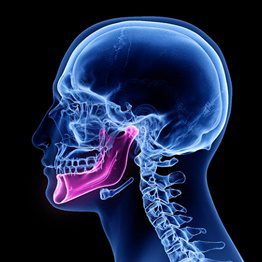
Many cases of TMD go undiagnosed because patients are often unsure of who to visit in order to address the issue and aren’t aware of the common signs. If you notice any of the following symptoms, we may be able to offer you relief:
- Jaw tenderness and pain.
- Lockjaw that occurs when you open your mouth.
- Earaches that radiate from the TMJ.
- Pain in the jaw joints.
- Difficulty chewing food.
- General facial discomfort.
- Clicking or popping when you move your jaw, accompanied with pain.
Diagnosing & Treating TMJ Disorder
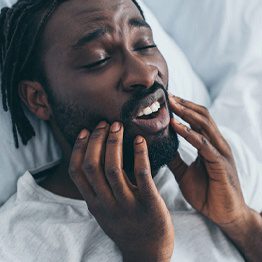
At MOD Squad Dental, we can examine your facial and oral structure to determine the root cause of your jaw dysfunction. Some common possible reasons why our TMJ patients experience chronic discomfort include:
- Arthritis
- Trauma
- Dislocation
- Bite misalignment
- Teeth grinding
Once we’re able to determine the cause, we can then develop a treatment plan. For patients with bite misalignment, we may suggest Invisalign orthodontic treatment. We also offer oral appliances that help shift your jaw into alignment and ease your pain and occlusal adjustments. The best way to learn how these treatments can help you is to schedule a consultation today.
Tips to Ease Your Discomfort At Home

In addition to seeking out treatment, you can help reduce the strain on your jaw joints by following some of these easy, at-home tips:
- Switch to a softer diet.
- Avoid chewing gum and biting your nails.
- Practice stretching and massaging your jaw joints.
- Apply a warm or cool compress to the affected area to reduce pain.
- Protect your jawbone and facial muscles from grinding and clenching.
Our team will be more than happy to provide you with some additional tricks to help tackle the discomfort associated with TMD.
Understanding the Cost of TMJ Treatment

After our examination, we’ll be able to determine which TMJ therapy options will best suit your needs. From there, we can develop a customized treatment plan and discuss the cost with you. Our team is more than happy to file dental insurance claims for patients, and we also offer additional financing through CareCredit as well for your convenience.
Patient Testimonial From Cara Duke (TMJ Therapy Patient)
“April 2003 I was in a pedestrian vs vehicle accident. I, the pedestrian, took out the windshield with the left back part of my head. Ever since then I struggled with severe jaw, face, head and ear pain known as TMD (Temporomandibular Disorder). At times it affected my ability to speak, eat and function. I watched my mom go thru two horrendous jaw surgeries and refused to do the same. I came to the decision that I would just live in pain for the rest of my life. It was until I was referred to Dr. Friedman that I realized there are other options besides face peeling, jaw breaking surgery. At age 33 Dr. Friedman diagnosed me with an arthritic left jaw joint and possible old undiagnosed injury to the jaw on top of the TMD.
It was decided that treatment would be splint therapy. He was able to lift my jaw off away from bone on bone creating a space where over time tissue would grow and cushion the joint. Within a month I was already relieved of so much pain. As time passed I noticed my jaw structure looking more symmetrical and normal. I can now eat, smile and live with no pain. Words cannot even begin to express how Dr. Friedman has changed my life.
The office holds high standards of cleanliness, is well organized, personable, and runs like a well-oiled machine. Dr. Friedman’s wife, Jessica, is amazing! She explains procedures in my terms so I can fully understand both medical and financial ends before anything is done. His life altering work coupled with the above and beyond customer service of the staff makes MOD Squad the total package. You guys are outstanding and deserve endless stars!!”

As a member of the American Academy of Functional Orthodontics, Dr. Friedman is proud to offer reliable traditional braces. This powerful treatment can handle even the most severe orthodontic cases in most situations, gradually and safely realigning teeth and bite positions. Dr. Friedman will place a series of brackets on your teeth and connect them with an archwire, which will use precise pressure to move your pearly whites into their ideal positions over time. Traditional orthodontic treatment has advanced by leaps and bounds over the decades, and Dr. Friedman will ensure your treatment goes as smoothly, quickly, and comfortably as possible.
Discreet clear aligner systems like Invisalign have become incredibly popular in recent years, but they can’t always do what traditional braces can. As a time-honored way to straighten smiles, traditional braces in Scripps Ranch, CA are by far the most versatile and reliable orthodontic solution available today. Whether you or a loved one are dealing with gapped, crowded, or generally crooked teeth, our expert team at MOD Squad Dental can most likely help with traditional braces. Get in touch with us today to learn more!
How Do Traditional Braces Work?
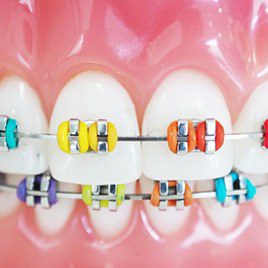
With traditional braces, small metal brackets are cemented to the front surfaces of each of the teeth. Then, your dentist in Scripps Ranch threads a sturdy wire through all of these brackets. Since this wire, known as the archwire, wants to maintain its natural shape, it exerts just enough pressure on the brackets to gradually shift the teeth into new positions.
Throughout this process, our dentists will periodically tighten the wires to ensure your teeth and jaws are moving as planned into the proper alignment. While the exact length of your treatment with braces will vary, it takes most patients between one and three years. During your consultation, we’ll provide you with an estimated treatment timeline.
What Orthodontic Issues Can Braces Fix?

One of the main benefits of traditional braces is that the metal wires and brackets can address several orthodontic problems, often at the same time. These issues include:
Bite Misalignment
When you bite down, do your upper and lower teeth not quite come together correctly? Whether you’re dealing with an overbite, underbite, open bite, crossbite, or another bite alignment issue, braces can bring both rows of teeth into the proper positions. Not only will you end up with a more even-looking smile, but you might also have an easier time chewing and speaking.
Crowded & Crooked Teeth
Teeth that are crowded, overlapping, or otherwise crooked can seriously hinder your self-confidence. Worse, the nooks and crannies among them are difficult to clean, so they can harbor food debris and bacteria, increasing your risk of tooth decay. By applying pressure to specific areas with traditional braces, our dentists can evenly space out your teeth, leading to a healthier and more confident grin.
Gapped Teeth
Even if small gaps between your teeth aren’t an aesthetic issue to you, they can still trap bits of food that attract harmful bacteria. Traditional braces can create a more conventionally attractive smile and lower your chances of cavities by expertly closing these spaces.
Caring for Your Braces
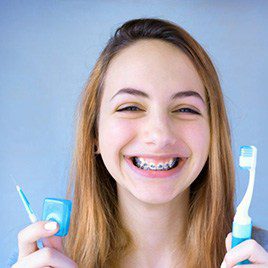
Taking good care of your braces is essential in making sure your treatment goes according to plan. After all, the last thing you want to do is extend your treatment time by damaging a bracket or wire. To minimize that risk, make sure to follow our dentists’ guidelines closely. They’ll likely recommend that you:
- Brush, floss, and rinse with mouthwash every day. You may need to purchase special flossers or interdental brushes to fully clean under your braces.
- Avoid foods that are particularly chewy, sticky, or crunchy.
- Wear a mouthguard whenever you participate in sports-related activities.
Attend regular checkups so that we can evaluate your progress and adjust your braces.
Traditional Braces FAQs
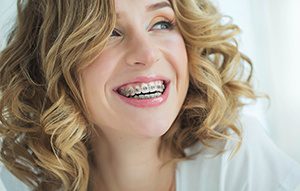
If you’re ready to correct any orthodontic issues, then one of the best ways to do this is with traditional braces in Spriggs Ranch. Although you can expect to achieve a perfectly straight smile with this treatment, it’s normal to want to know as much as you can before committing to it. To help you feel more confident about the process, our team at MOD Squad Dental has compiled the most commonly asked questions we get about braces from our patients. Read along or give us a call if you’d like to know more today.
Do Traditional Braces Hurt?
You might experience some mild soreness in your gums and pearly whites at the beginning of your orthodontic process. This is because the braces will be gradually shifting your teeth to a more aligned position, which can sometimes feel slightly uncomfortable. Fortunately, these sensations are usually temporary and should vanish on their own. However, you can help manage any discomfort with over-the-counter pain relievers and sticking to softer meals. You might also consider using orthodontic wax to protect your lips and other soft oral tissues from damage and irritation.
What Can You Not Eat with Traditional Braces?
We highly recommend that you maintain a soft-food diet for at least the first week after getting your braces. Your teeth will be getting used to the metal wires and brackets, which may feel sore with the pressure from eating. Munching on hard or crunchy treats can also damage your wires, brackets, or elastic bands. Here’s a list of several foods you should avoid:
- Popcorn
- Chewy, sticky, or hard candy
- Chips
- Nuts
- Corn on the cob
Can I Chew Gum with Traditional Braces?
While gum may not be hard or crunchy, it can get stuck between your braces easily. This can potentially cause your wires to bend or your teeth to shift unexpectedly. Some studies have shown that chewing gum can relieve discomfort during orthodontic treatment as well as reduce any gum inflammation. It can even lower the risk of tooth decay if done after eating, as it can help remove debris and food particles from between your braces. Though chewing gum may have some benefits, you may want to avoid any risks that can also come with it.
Am I Too Old to Get Braces?
Although you may associate braces with children and adolescents, you won’t have to worry about an upper age limit for undergoing the treatment process. Fully matured teeth may be more firmly rooted in the jawbone, but they are still just as malleable as teenage pearly whites. You’ll also need to ensure your oral health is in good condition before you can start wearing braces, as any issues will need to be addressed first. If you do have certain dental issues, then we may recommend preliminary procedures like fillings or periodontal disease therapy. Some dental insurance policies also may not cover braces for adults, so be sure to consult your provider about the details before committing to the treatment.
